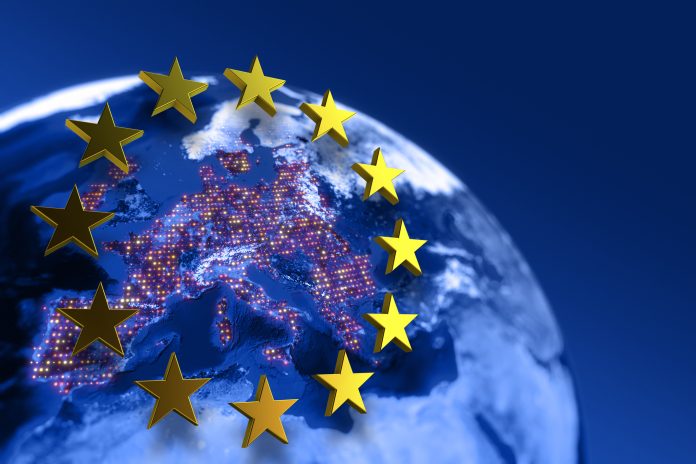Open Access Government analyses EU research and innovation for a more competitive Europe, Europe’s innovation performance, and Canada joining Horizon Europe in this policy update
The European Commission’s Directorate-General for Research and Innovation (RTD) spearheads the European Union’s (EU) policy on science, research, and innovation, which seeks to foster growth and employment and address critical societal challenges. Director-General Marc Lemaître is part of the prestigious leadership and organisation of RTD. (1)
In the earlier edition of our publication, Lemaître noted that Europe is addressing health, environmental, defence and digital challenges by deploying research and innovation (R&I) policies. The intention is to achieve scientific progress and technological improvements for the benefit of people and our planet, especially in the face of a continuously changing global environment. (2)
EU research and innovation: A more competitive Europe
In late June 2024, the Commission published the 2024 edition of the Science, Research and Innovation (R&I) Performance report (SRIP). Increased EU investments in R&I have contributed to the EU’s competitiveness in green technology and the overall high quality of EU research over the last two decades.
The report highlights three main challenges for EU research and innovation:
- Underutilised R&I ecosystems: The EU struggles to fully leverage its rich R&I ecosystem due to significant disparities in research and development (R&D) efforts among Member States.
- Persistent R&I divide: R&I activities are often concentrated in specific locations and can be strengthened by supporting the most successful activities and participants.
- Technological gap compared to other regions: The EU faces challenges in securing private sector investment for R&I at the EU level, contributing to a technological gap with different areas of the world. Further progress is needed in the digital realm.
The EU excels in global patent filings for renewables and energy efficiency but lags behind China in scientific output. In terms of the worldwide share of the top 10% of most-cited publications, the EU’s performance is similar to that of the U.S. but behind China. In 2021, the EU ranked fifth in R&I intensity (2.3%), lower than the U.S. (3.5%), Japan (3.3%), South Korea (4.9%), and China (2.4%), which surpassed the EU’s level for R&I intensity for the first time in 2020.
“This edition of the SRIP report reveals that we must intensify our efforts in Europe to achieve the target of investing 3% of GDP in research and development and to deliver innovative solutions for our challenges. Boosting Europe’s scientific and technological capacities and complementary action at the EU, national and regional levels are essential for both current and long-term resilience and competitiveness,” said Iliana Ivanova, Commissioner for Innovation, Research, Culture, Education and Youth (2023-2024). (3)
Is Europe’s innovation performance steadily improving?
The EU’s innovation performance has been steadily improving, with a 10% increase since 2017 and a growth of 0.5% from 2023 to 2024. The 2024 edition of the European Innovation Scoreboard (EIS) indicates that most EU Member States have enhanced their innovation performance. However, the degree of improvement varies significantly from one country to another.
Between 2023 and 2024, innovation performance increased for 15 EU Member States and declined for 11 others. Denmark remains the most innovative country, followed by Sweden. Estonia has become a Strong Innovator, while Belgium moved down to the Strong Innovators category.
In a broader analysis that includes other European countries and specific global competitors, there is a discernible shift in the international landscape. Switzerland stands out as the most innovative European country, while South Korea maintains its position as the most innovative global competitor in 2024. Notably, China has overtaken Japan and is steadily narrowing the gap with the EU.
The EU holds a strong global position and shows strong performance in many areas, such as SMEs introducing process and product innovations and environment-related technologies. Despite this, the EU faces challenges in areas like collaboration among innovative SMEs, intellectual assets, and R&D expenditure in the business sector compared to its main global competitors.
“The European Innovation Scoreboard 2024 shows we have made significant progress in innovation performance in recent years. However, innovation divide persists between the Member States, and the EU also has potential to improve its standing in the global innovation race. We must continue our efforts, particularly in striving for more private investment in research and innovation,” said the Commissioner for Innovation, Research, Culture, Education and Youth (2023-2024). (4)
Canada joins Horizon Europe
To end on a positive note, we’ve received news that Canada is joining the increasing number of non-EU countries that are collaborating with the EU’s R&I program, Horizon Europe. Together, they will focus on large-scale projects aimed at addressing significant challenges.
Canada is part of Horizon Europe’s Pillar II, which funds collaborative research projects. Canadian organisations can join and lead research consortia with global partners to tackle challenges, receive program funding, and contribute to the program’s budget.
Horizon Europe is the EU’s main €93.5 billion funding program for R&I from 2021-2027. It addresses climate change and UN Sustainable Development Goals, and Pillar II focuses on global challenges like energy, climate, digital economy and health with a €52.4 billion budget.
Canadian organizations and researchers can participate in Horizon Europe’s other pillars, including Excellent Science and Innovative Europe, along with the Marie Skłodowska-Curie Actions (MSCA). The MSCA accounts for half of the current EU-Canada projects under Horizon Europe.
“With this step, we are strengthening the EU’s ties with trusted partners that have a solid scientific base and a robust track record in research and innovation. Now we can enable our brightest minds to come together and work on joint solutions for our future,” Commissioner for Innovation, Research, Culture, Education and Youth (2023-2024) said. (5)
References
- https://commission.europa.eu/about-european-commission/departments-and-executive-agencies/research-and-innovation_en
- https://www.openaccessgovernment.org/empower-research-careers-strengthen-the-european-research-area/168965/
- https://ec.europa.eu/commission/presscorner/detail/en/ip_24_3505
- https://ec.europa.eu/commission/presscorner/detail/en/ip_24_3666
- https://ec.europa.eu/commission/presscorner/detail/en/ip_24_3626











